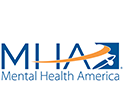Stress on Family Caregivers Soars During COVID-19 Pandemic
Serving as a family caregiver for a loved one can be stressful under the best of circumstances. However, throughout the COVID-19 pandemic, the nation’s estimated 53 million family caregivers have faced additional challenges and taken on new responsibilities that may be pushing some to the brink.
An October 2020 report issued by the Rosalynn Carter Institute for Caregiving (RCI) found that 83 percent of caregivers they surveyed said they are under increased stress related to caregiving since the start of the pandemic. Moreover, many of these caregivers haven’t been receiving the support they were accustomed to before the pandemic; 42 percent said the number of other caregivers available to help them has declined during the pandemic.
RCI stated, “with increased health and safety COVID restrictions being imposed on an already overburdened medical and home care workforce, unpaid home and family caregivers are being increasingly relied upon to provide complex care in the home – often without any training, respite or ongoing support.”
Effects of COVID-19 on Family Caregivers
A community survey from the University of Pittsburgh looked at specific effects of the pandemic on families and family caregivers. Among their findings:
- 43 percent of caregivers reported their mental health was worse than before the pandemic.
- 27 percent of caregivers said their physical health was worse than before the pandemic, compared to 18 percent of non-caregivers.
- 43 percent of caregivers said their finances are now worse than before the pandemic.
- 29 percent of caregivers said that since the pandemic started, they are now more worried about having enough food and being able to pay for food.
- 31 percent of caregivers said their ability to access health care was worse than before the pandemic.
“Decades of research on family caregiving has shown that long-term and complex caregiving tasks often result in chronic stress for family caregivers, which can lead to negative health outcomes for both the caregiver and care recipient,” stated the University of Pittsburgh researchers. “The COVID-19 pandemic has the potential to add to the complexity of caregiving given stay-at-home requirements, reduced access to health care services, and the vulnerability of individuals at higher risk for severe side effects.”
Looking at the issue of caregiver finances in more detail, a September 2020 study conducted by Embracing Carers found that 54 percent of caregivers are experiencing worsened financial health as a result of the pandemic, with 37 percent indicating that more of their money is going toward supplies and resources they need to provide care.
Caregivers Need a Strong Foundation
C. Grace Whiting, J.D., is president and CEO of the National Alliance for Caregiving, a non-profit dedicated to improving the quality of life for family caregivers and those in their care through research, innovation and advocacy. She offered guidance for caregivers who are new to the role.
“The first challenge is a foundational one – getting yourself grounded and identifying what you need to do,” Whiting said. “Learn about the disease or condition and what you may be called upon to do to help your friend or family member. What sort of assistance will they need with activities of daily living like dressing, bathing and feeding? Will they have mobility issues? Will they need help managing their finances or shopping? What sort of medical nursing tasks might you be required to handle?”
She encouraged caregivers to talk with their care recipients to understand their caregiving goals and wishes and to work together to map out a plan for what the caregiver can handle themselves and where they need outside help.
Adapting to COVID Challenges
The COVID-19 pandemic has caused some existing caregiving issues to erupt. Whiting pointed to telehealth and technology in general as one of the COVID-19 pressure points facing caregivers.
“Stay at home and social distancing mandates have shifted the navigation and delivery of health care from in-person to online,” she said. “Caregivers need to make sure they have the internet access and tech savviness needed to access online patient portals as well as the authorization to log in and act on someone’s behalf.”
Another pressure point exists when a care recipient is in the hospital or a long-term care facility, said Whiting: “Under COVID restrictions, caregivers typically aren’t permitted to visit someone, making it difficult to participate in decision-making as part of the care team and get in-person guidance on managing care after discharge,” she said.
Caregivers also must pay special attention to COVID-related hygiene, especially if they frequently go in and out of their care recipient’s home or if their care recipient is immunocompromised. That means following CDC guidance on mask wearing, hand hygiene and social distancing at all times, as well as being cognizant of how vaccines work.
“Access to vaccines varies from state to state and county to county, and there’s a good chance the caregiver may not be eligible until long after their care recipient has been vaccinated,” said Whiting. “Even if both parties have received the vaccine, they shouldn’t use it as an excuse to go out and about until we reach a critical mass of vaccinated people.”
Additional COVID-related challenges adding to caregiver stress include closure of childcare supports; potential job loss, long-term career and income security damage; and restricted access to medicine, equipment and care providers.
Support for Caregivers
The Embracing Carers study found that caregivers are spending over 7 hours a week more on caregiving activities during the COVID pandemic than they were before the pandemic started. Whiting encouraged caregivers to seek support when they are overwhelmed, but admitted that in many cases, support infrastructure may be lacking due to COVID-imposed restrictions.
“Start by asking your care recipient’s medical care team if they provide training, respite or support services for caregivers,” she said. “Then, seek out community-based services through senior centers, area agencies on aging, and faith communities. If you are working while caregiving, you may be able to receive help with elder care through your employee assistance programs as well as self-care and wellness programs through your health insurance provider.”
To help support caregivers, NAC has been working with health care researchers, innovators and grassroots advocates in community and global town hall sessions designed to gather insights on issues impacting various segments of the caregiving population, particularly people of color.
“Some of the themes we have uncovered are not just specific to the United States,” said Whiting. “Health disparities facing communities of color, women bearing a disproportionate amount of care responsibilities and the overwhelming need for respite were common globally.”
NAC also is working with the Adira Foundation to launch an online community called Take Care Community, which will give people an opportunity to reflect on the challenges they’re facing and find resources matched to those challenges. The program is scheduled to launch soon.
In addition, NAC offers a range of online, caregiving-specific COVID-19 resources for families.
“Caregiving can be incredibly difficult, but also incredibly rewarding,” Whiting concluded. “I encourage everyone to play a role in helping to support caregivers. People may think of caregivers as a shoulder to cry on when often, they too need a shoulder to cry on.”


















